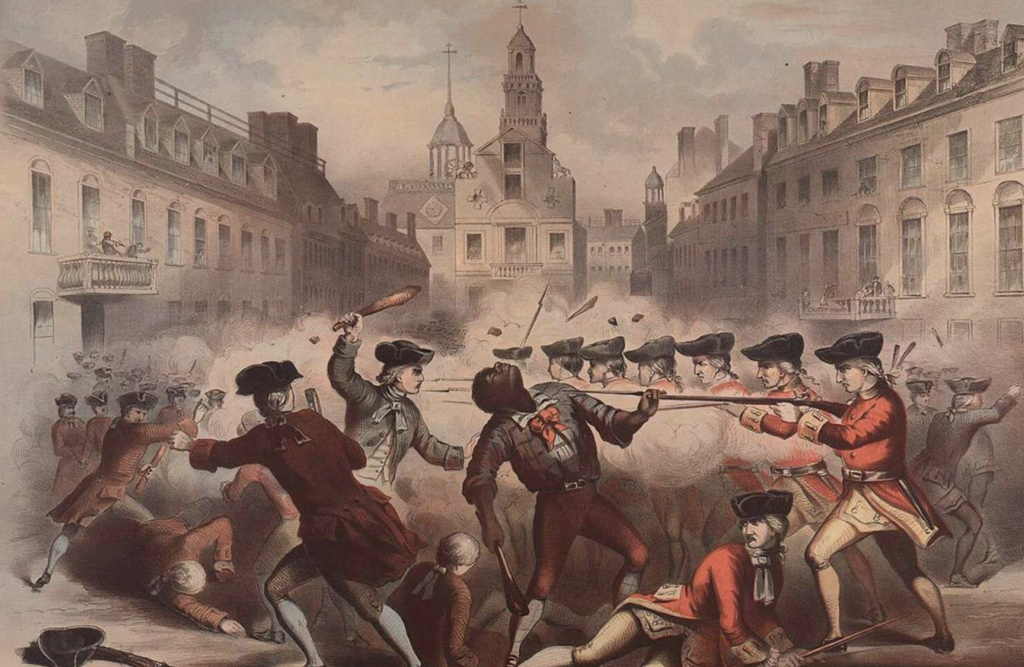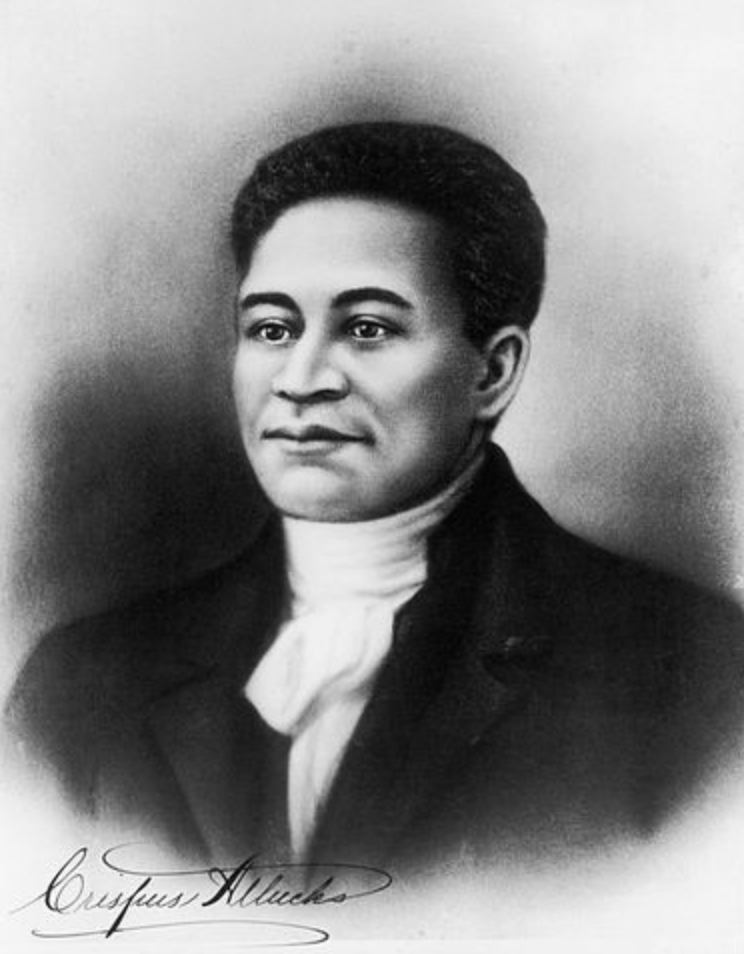[broadstreet zone=”99032″]
BOSTON- Boston Mayor Michelle Wu on Thursday declared today, March 5 Crispus Attucks Commemoration Day.
The day honors an Attucks, who historians believe was the first casualty of the American Revolution at the Boston Massacre.
Today is the 253th anniversary of the Boston Massacre. On March 5, 1770, a group of nine British soldiers shot five people in a crowd of three or four hundred who were harassing them verbally and throwing various projectiles. One of the 5 killed was Attucks.
Three Americans died instantly: rope maker Samuel Gray, mariner James Caldwell, and Crispus Attucks, who historians believe was the first to die.
Samuel Maverick, a 17-year old apprentice ivory turner died on March 6.
Irish immigrant Patrick Carr was shot in the abdomen and died 2 weeks later.
[broadstreet zone=”59947″]
“The story that an Afro-Native man sparked the war for independence often goes overlooked,” Mayor Wu said Thursday, March 2 at a press conference. “So many … portrayed Crispus Attucks as a white man, erasing his Afro-Native Heritage, erasing the fact that a formerly enslaved man faced down British muskets for our nation’s freedom, and erasing the historical fact that it was the courage of a person of color that stoked the flames of this revolution.”
Attucks has ties to Framingham.
Attucks “was an enslaved man born in South Framingham of African and Native American parents. His father, Prince Yonger, was thought to have been a slave brought to America from Africa and his mother Nancy Attucks was a Natick Indian. Attucks was a direct descendant of John Attucks, an Indian killed in King Philip’s War in 1676,” according to the Framingham History Center.
“Attucks Master Deacon William Brown, a miller and clothes maker, built a gristmill and then a fulling mill on what were deep rushing rapids of the Cochituate Brook. Attucks worked the mill cleaning cotton harvested by southern slaves until he disappeared one day,” according to the Framingham History Center.
According to The Black presence in the Era of the American Revolution, Master Brown advertised in the Boston Gazette in October 2, 1750, a description that referred to Attucks,” Ran away from his Master William Brown from Framingham, on the 30th of Sept. last, a Molatto Fellow, about 27 Years of age, named Crispas, 6 feet two inches high, short curl’d Hair, his Knees nearer together than common, had on a light colour’d Bearskin Coat.” The owner offered ten pounds reward and warned ship captains not to hire him.
[broadstreet zone=”59948″]
But Attucks escaped to Nantucket, Massachusetts and sailed as a harpoonist on a whaling ship. It is thought that he was a sailor on cargo ships plying the West Indies, according to the Framingham History Center.
Attucks now lies in Granary Burying Ground in downtown Boston.
Haroon Rashid, President of the Friends of Crispus Attucks Association, requested the proclamation by Mayor Wu to make March 5 Crispus Attucks Day.
City of Boston Chief of Diversity, Equity, & Inclusion Mariangely Solis Cervera said “I am so grateful for every single person who is here in the room for recognizing the importance of telling the complete story of Crispus Attucks.”
She said she met with Rashid and in an on-hour conversation learned so much about Attucks that is not taught in the schools, said Cervera, who is a former educator.
[broadstreet zone=”52386″]

[broadstreet zone=”66385″] |
“Just a few steps from here, you can almost see it. Many thousands of people every day walk over that (Boston Massacre) medallion that’s on the ground without paying a second thought, a second of attention to it. We know that in the months and years after the Boston Massacre, the day that Crispus Attucks died, our revolution stirred and the stories that were told reverberated around the world. But it was most often and for a long time, only stories about Patriots like Paul Revere and prints that were then printed up depicting what happened that day to spark this conversation and the revolution itself. But many of these prints portrayed Crispus Attucks as a white man erasing his Afro native heritage, erasing the fact that a formerly enslaved man faced down Britishmuskets for our nation’s freedom and erasing the historical fact that it was the courage of a person of color that stoked the flames of this revolution nearly a century later,” said Mayor Wu from Boston City Hall on Thursday.
“As another struggle for freedom brewed in this country, Crispus Attucks and his legacy were brought clearly into the light in the lead up to our nation’s civil war, Roxbury-based artist, John Buford portrayed Crispus Attucks as he truly was. And his print Mr. Buford’s print, and the activism of abolitionists popularized the truth that Crispus Attucks the first person to give his life in the American Revolution, was a black indigenous man. It’s a truth that people of color have always played a leading role in our nation’s pursuit of freedom and justice from the very beginning and continuing to this day,” said Mayor Wu at Thursday’s press conference.
“Last month, we gathered at the Museum of African American History to announce the creation of Boston’s reparations task force. We committed collectively to fostering reconciliation, repairing harm, and strengthening our communities. And we acknowledge that the work must begin with an honest reckoning, a recognition of the full truth of our history, the kind of truth on which meaningful healing and repair can finally be built. And so in that spirit, I’m honored to join the leaders in this room today to sign a proclamation, which will declare March 5th to be Crispus Attucks Commemoration Day in the City of Boston,” said Mayor Wu
Boston City Councilor Ruthzee Louijeune said “We know that to create the inclusive history that we know is the history of Boston, that black history is a history of Boston, that black history is American history, and sometimes we have to fight for that.”
[broadstreet zone=”53903″]
“The other day, last week, last week grew at a celebration for black veterans in Boston, and we talked about all the ways in which black folks have fought for this country, even when this country hasn’t fought for us. And so I commend all of you who are here doing the work. I see my old teachers here in the room. So I thank you for continuing to do the work of teaching us, of teaching this city for us to really bring out our history and who we are shining a light on folks like Crispus Attucks, who was the first casualty in the battle for freedom in this country. And we know that it didn’t stop for us for the Revolutionary War, and that we are still fighting today for our space and our place everywhere in this country to hope close that racial wealth gap. And so I see so many folks here who I learn from, who I will continue to learn from and who are in partnership with us in this work. So I just say thank you,” said Councilor Louijeune.
Framingham State Rep. Priscila Sousa, a member of the Black & Latino Caucus, also attended the press conference and spoke.
She said that when Framingham was renaming one of its elementary schools during the pandemic that Crispus Attucks was one of the names being considered. The school was eventually renamed Harmony Grove Elementary.
Harmony Grove was a gathering place was the Massachusetts Anti-Slavery Society.
On July 4, in 1854 Henry David Thoreau, Sojourner Truth, Wendell Phillips, Lucy Stone and William Lloyd Garrison, owner of The Liberator (an anti-slavery newspaper), spoke and burned a copy of the 1850 Fugitive Slave Law and the US Constitution in front of 2,000 people.
“Garrison proclaimed that the Constitution (which had language acknowledging the institution of slavery) should be condemned as it was a “covenant with death, and an agreement with hell” (ibid). The Grove erupted with both cheers and boos for this was very disrespectful towards the US Government as well as a powerful call for change. Garrison and the Massachusetts Anti-Slavery Society finally saw the beginnings of change 9 years later on January 1, 1863 when the Emancipation Proclamation was issued by President Lincoln,” according to the Framingham History Center.
Sousa noted that Attucks was a Framingham slave, and that it is important for children to learn about the real history of the first person to die in the fight for America.




